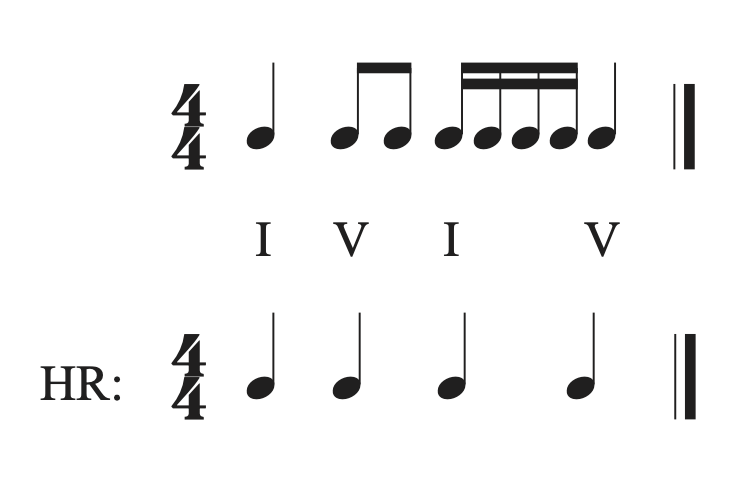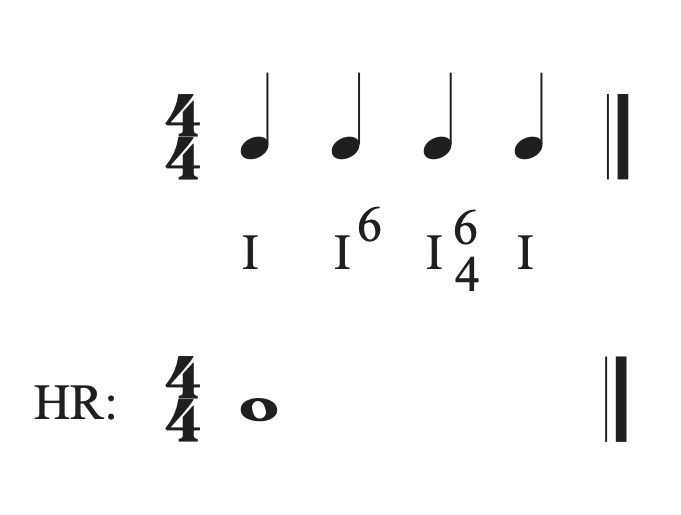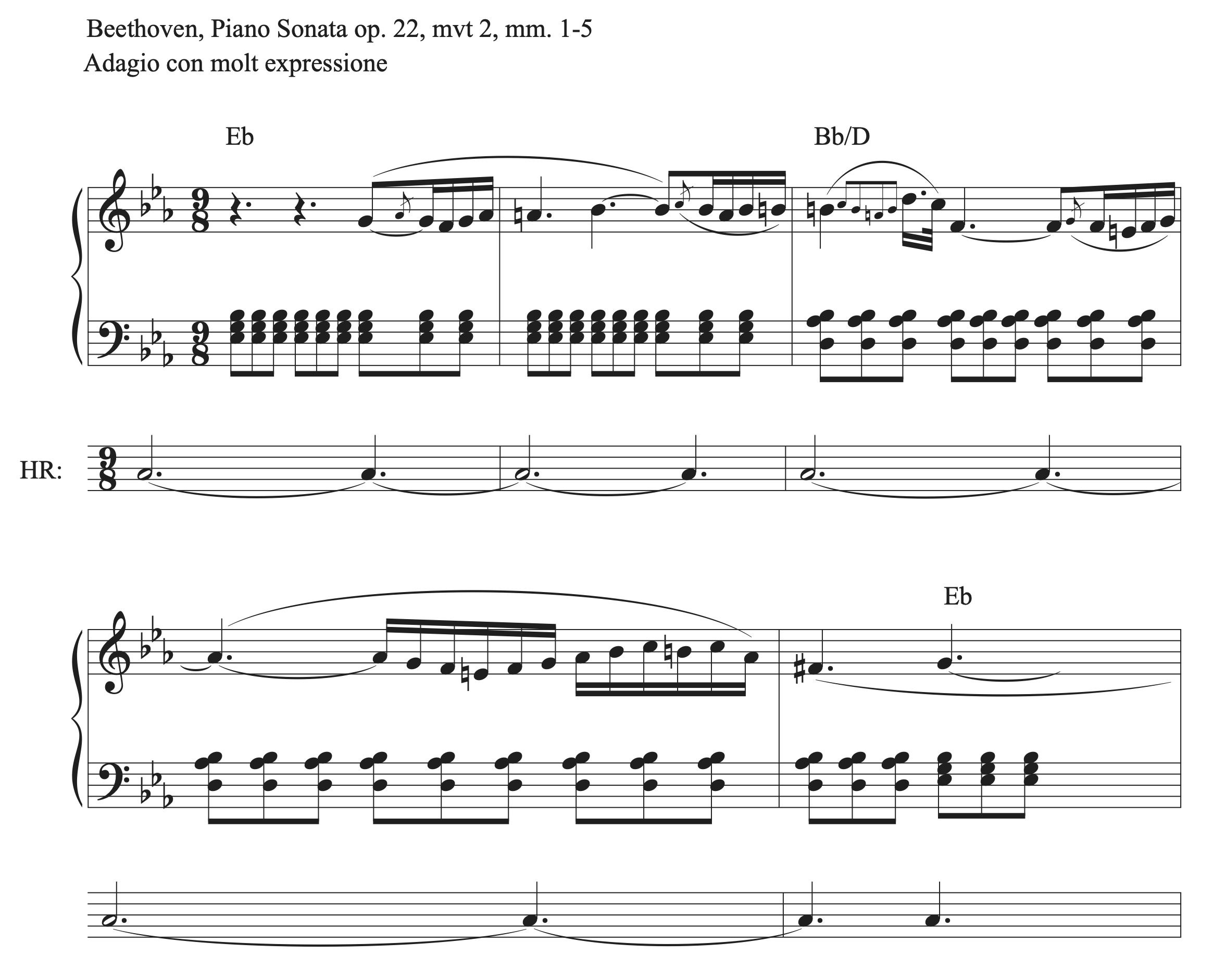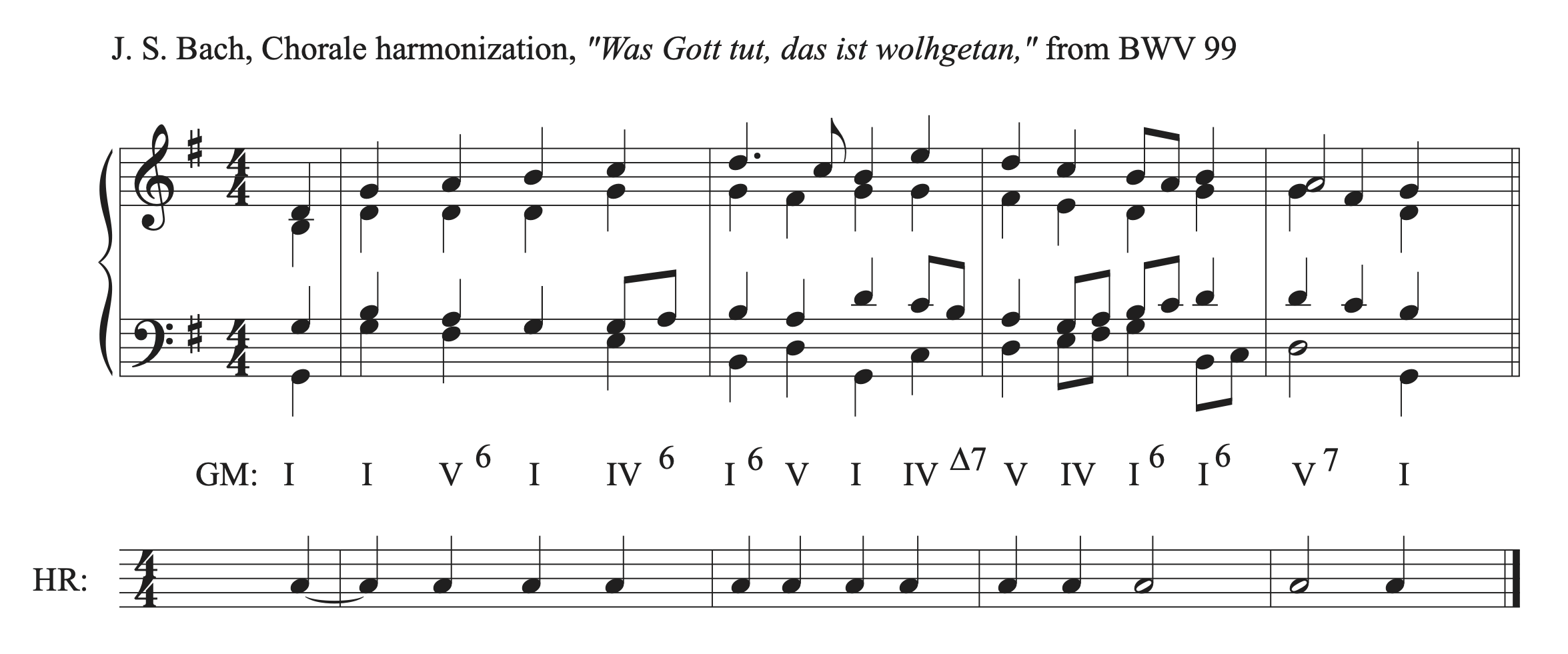6.3 Harmonic Rhythm: Tutorial
Harmonic Rhythm
Harmonic rhythm is the rate at which chords change in a piece of music. The length that each chord in the music lasts is symbolized using standard rhythmic notation. Look at the following example. Notice that the rhythms used in each beat are not the same as the harmonic rhythm.

When symbolizing harmonic rhythm, all inversions of a chord count as part of the same chord. Look at the following example. Each beat has a tonic chord in a different inversion, but because the chord itself has not changed during the bar, the harmonic rhythm is symbolized using a whole note.

While harmonic rhythm shows the rate at which chords change, it does not show the functional relationship between chords. In the following example, we see a cadential 6/4-V-I progression in the last two bars. Functionally, the cad 6/4 is a decoration of the V chord and is considered a dominant function chord, but because the notes of the chord change between cad 6/4 and V, the harmonic rhythm reflects the chord change, not the functional relationship of the two chords.

Harmonic rhythm can occur as infrequently as every couple of bars or longer. Look at the following example. The rate of chord change is very slow. Notice that melody in this piece is highly ornamented over a regular rhythmic pulse in the accompaniment. A slower harmonic rhythm allows time to ornament the melody without sounding rushed or overwhelming the ear. Note that bar lines are needed when drawing harmonic rhythm.

Link for recording of movement 2 at 7:31: Beethoven: Sonata No.11 in B-flat Major, Op.22
Harmonic rhythm can also be faster, occurring as often as every beat or note in the melody. Look at the following example. Note that the harmonic rhythm changes on every beat. The harmonic rhythm also slows down at the cadence in bar 4. This is another characteristic of harmonic rhythm in music. The rate of chord change often accelerates or decelerates with the approach to a cadence.

Harmonic rhythm generalizations:
- Patterns of harmonic change often help to define the meter.
- Tempo and harmonic rhythm often display an inverse relationship. When tempo is fast, harmonic rhythm is often slow. When tempo is slow, harmonic rhythm is often fast.
- Harmonies most often change on strong beats rather than on weak beats, and more often on downbeats than upbeats.
- The rate of chord change often accelerates or decelerates with the approach to a cadence and final cadence chords usually are metrically stronger than the chord that precedes them. When looking for cadence points and phrase separations, examining the harmonic rhythm is often helpful.
- The tonic occupies an accented metric position more often than the dominant (the HC is a notable exception).
- Composers can use harmonic rhythm as a compositional tool. As an example, they can shift the harmonic rhythm to add variety and interest (rhythmic dissonance) to the music. They can also use the same harmonic rhythm to highlight similar phrases in the music, which can be useful when determining the phrase structure of a piece and when finding cadence points.
Listen to various pieces of music to see if you can hear the rate at which chords change. In the music you are currently playing or studying, analyze the chords and map the harmonic rhythm. Does the harmonic rhythm highlight similarities in phrase structure? Do changes in the harmonic rhythm help you find cadences? Does the harmonic rhythm highlight the meter? Does it stay consistent throughout your piece, or does the composer create interest and variety through varying the harmonic rhythm? After studying the harmonic rhythm, listen to your piece with fresh ears. Does it sound different? If so, what do you hear that you didn’t hear before?

